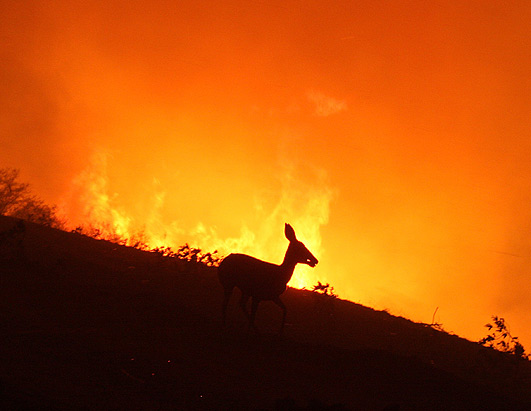The whitetail deer (Odocoileus
virginianus) population in Nebraska has been under attack this year. An Epizootic
Hemorrhagic Disease (EHD) outbreak has taken a heavy toll, killing an estimated
5818 individuals.
Such a high number of mortalities is uncommon for EHD in
Nebraska. The graph below shows that in past years the death toll rarely
exceeds 100 individuals. According to Greg Wagner, Public Information Officer
for Nebraska Game and Parks, last year's mild winter coupled with dry
conditions this summer may be to blame. In previous years, a harsh winter would
kill of the biting midge or fly responsible for spreading the disease.
Deer begin to show signs of being infected about seven days
after being bitten by an infected midge. Symptoms of the disease include: loss
of appetite and fear of man, fever, and rapid respiration rates. Deer killed by
EHD are often times found in or near bodies of water. This can be attributed to
the fever caused by the disease, infected deer often lie in water to reduce
their internal body temperatures. The deer eventually die from extensive
internal bleeding.
With bow season currently running and rifle season right
around the corner, hunters may be worried that they will not see as many deer
in their area. In some areas of the state this may be true, but the graph below,
provided by Wagner, shows that not all counties have been affected equally by
the disease.
The NebraskaLand magazine's website reports that the
disease cannot be transmitted to humans or pets. The meat from infected deer is
safe to eat and will not pass on EHD to humans. If you should happen to come
across a deer that you believe to have been killed by EHD, the Nebraska Game
and Parks Commission is asking that you contact their offices so they can
further determine the extent of the disease.






